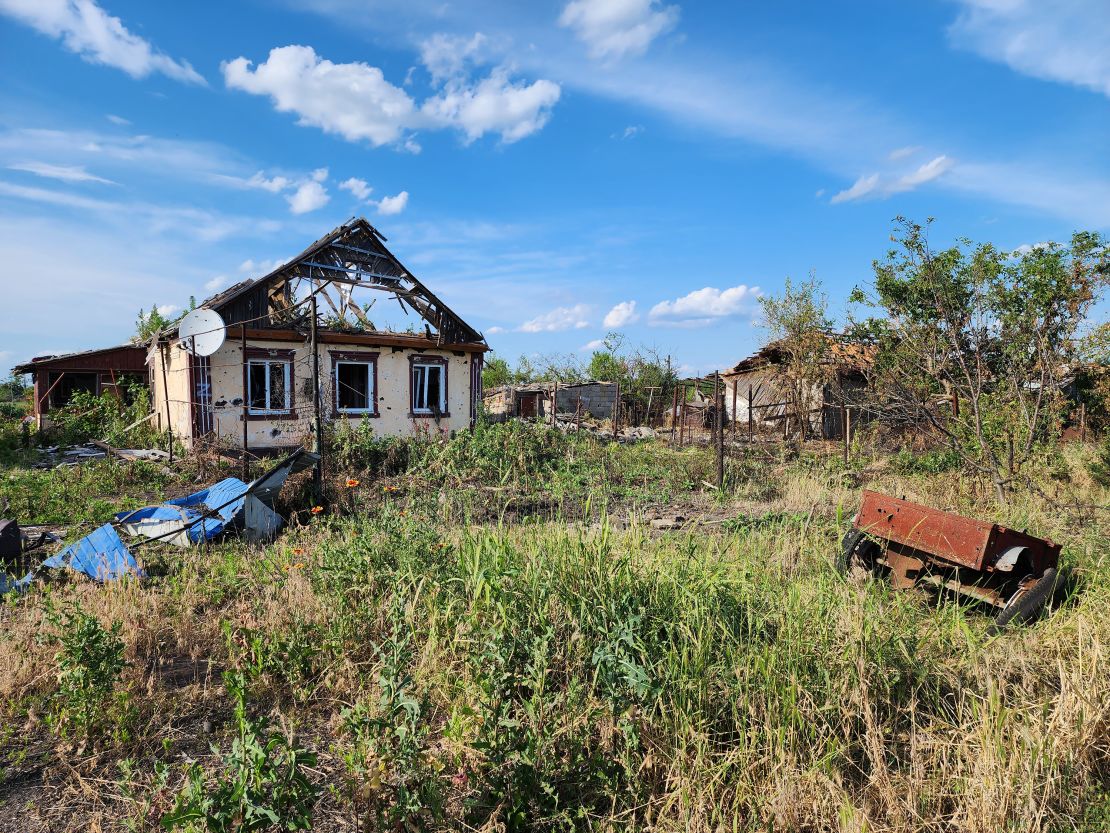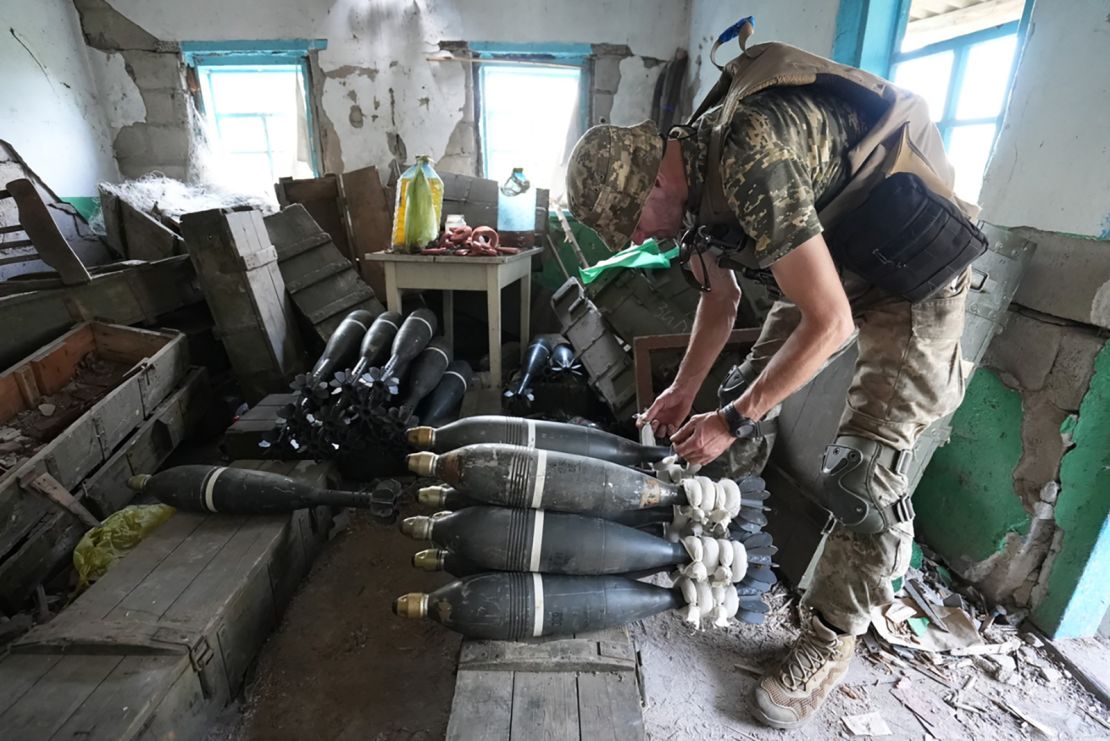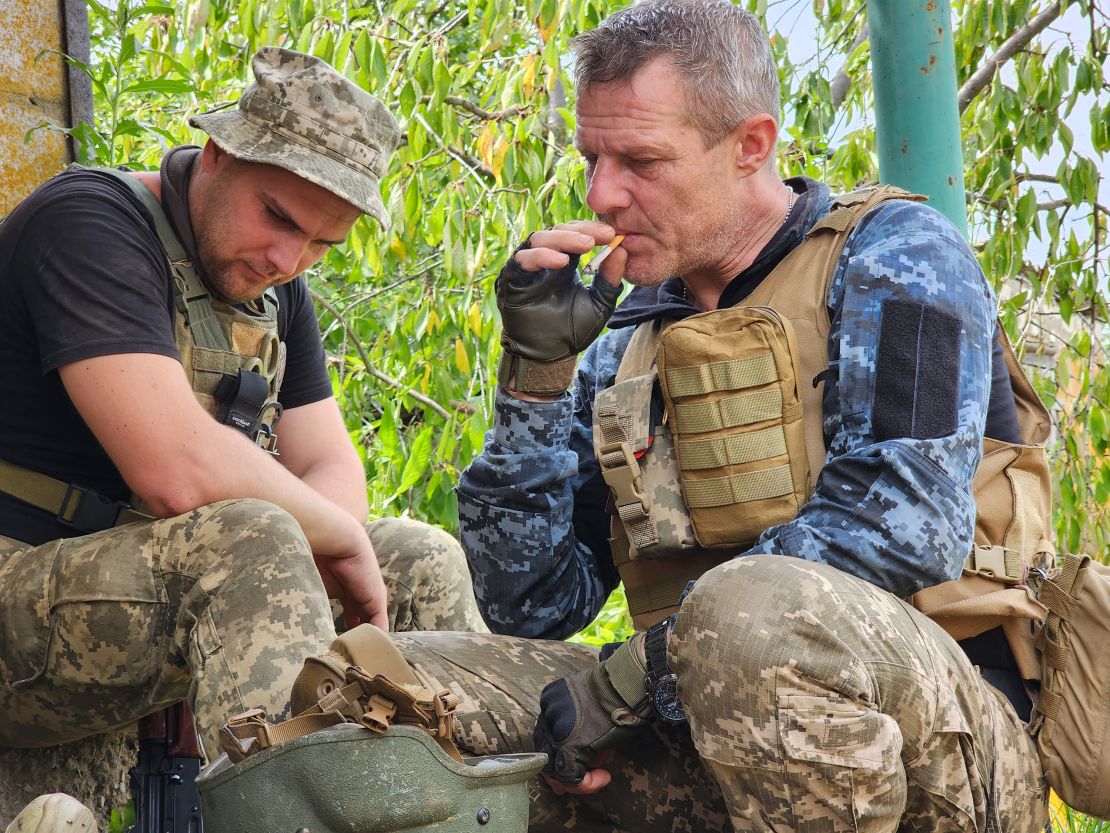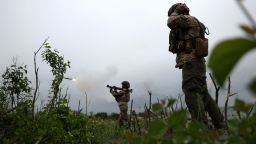The bangs of incoming and outgoing shelling are the soundtrack of Ukraine’s frontline. But its president warned this week that the counteroffensive should not be seen through the lens of a Hollywood movie.
Just outside the newly liberated villages of Neskuchne and Storozheve, Ukrainian soldiers take shelter in destroyed houses vacated by the Russians, waiting for orders to fire mortars at enemy lines.
It’s busy. The men of the 35th Marine Brigade transfer newly arrived American-made 120-millimeter mortar rounds to their temporary hideout. They clean and prepare them for launch and scribble messages on the shells for their enemy. Another group get the coordinates and adjust the mortar for better aim.
The drone flying overhead is their eyes on the enemy line across the fields. When they hear the buzz of the drone engine, the soldiers occasionally peek up to check if it’s theirs or the Russians’.
Then they wait, sometimes for hours, to fire.
The sounds cloud the blue sky. The bangs of outgoing artillery and mortar rounds cut through the tranquillity of abandoned fields. Shells whizz through the sky in the familiar whistle of incoming rounds along with the successive pops of Russian grad rockets. The booms of impact intersperse the non-stop exchange of fire.
Occasionally, a soldier flinches when the sound gets louder and closer.
“There are moments that you want to hide, but you just sit and wait,” says Yuri, a UK-trained soldier, resting in a small protective trench. It is his third day on the job.
But like the long waits of the soldiers, the Ukrainian counteroffensive is a slow grind.

Russian President Vladimir Putin says there is a lull in the counteroffensive. But Ukrainian leader Volodymyr Zelensky warns against expecting fast results. “Some want some sort of Hollywood movie but things don’t really happen that way,” he said in a BBC interview. Each side claims the other has suffered heavy losses.
This strip of small villages in the Donetsk region were liberated on June 10, a day before Zelensky announced the counteroffensive was underway. Since then, the Ukrainian military has not announced substantial gains on the southern or eastern frontlines.
For the soldiers who walked through these villages a day after liberation, it’s bittersweet.
“The main thing I felt was anger, because when you go through the villages, your imagination can picture how it was before the war. People were living here. People had good houses. You can see their belongings inside. And now we enter the village and see it in ruins, we get angry,” says Matyoriy, a 35th Marine soldier.


The thuds of artillery and roving drones punctuate every sentence.
The road to their position snakes through destroyed houses hugged by overgrown gardens. A line of collapsed roofs jut through the untrimmed trees. Neskuchne had a pre-war population of around 700 people. Hardly anyone stayed there after Russia occupied the villages at the beginning of the invasion, but signs of the life that once was are still visible.
A blue and white metal fence surrounds a charred, roofless house that spewed out its broken furniture. A small satellite dish hangs to the front of a house punctured by bullets and shrapnel.
These houses and the surrounded fields could be booby-trapped and mined, Ukrainian soldiers warn. It’s not all that the Russians left behind. A blood-soaked stretcher left by the retreating troops lays on the side of the road. Nearby, there’s a decomposing body of a Russian soldier. Ukrainian soldiers say many corpses were collected earlier and many more could still be in the fields.
“I only start to realize what’s really happening and how much we took after I see it on the news, when they draw a map and I see how much ground we took. I start to realize that we really did it,” Matyoriy adds.
The radio beeps with the orders for the soldiers. They fire multiple rounds towards the Russian line, a couple of miles away. The loud booms keep ears ringing. The soldiers sit back and wait for the next order.

